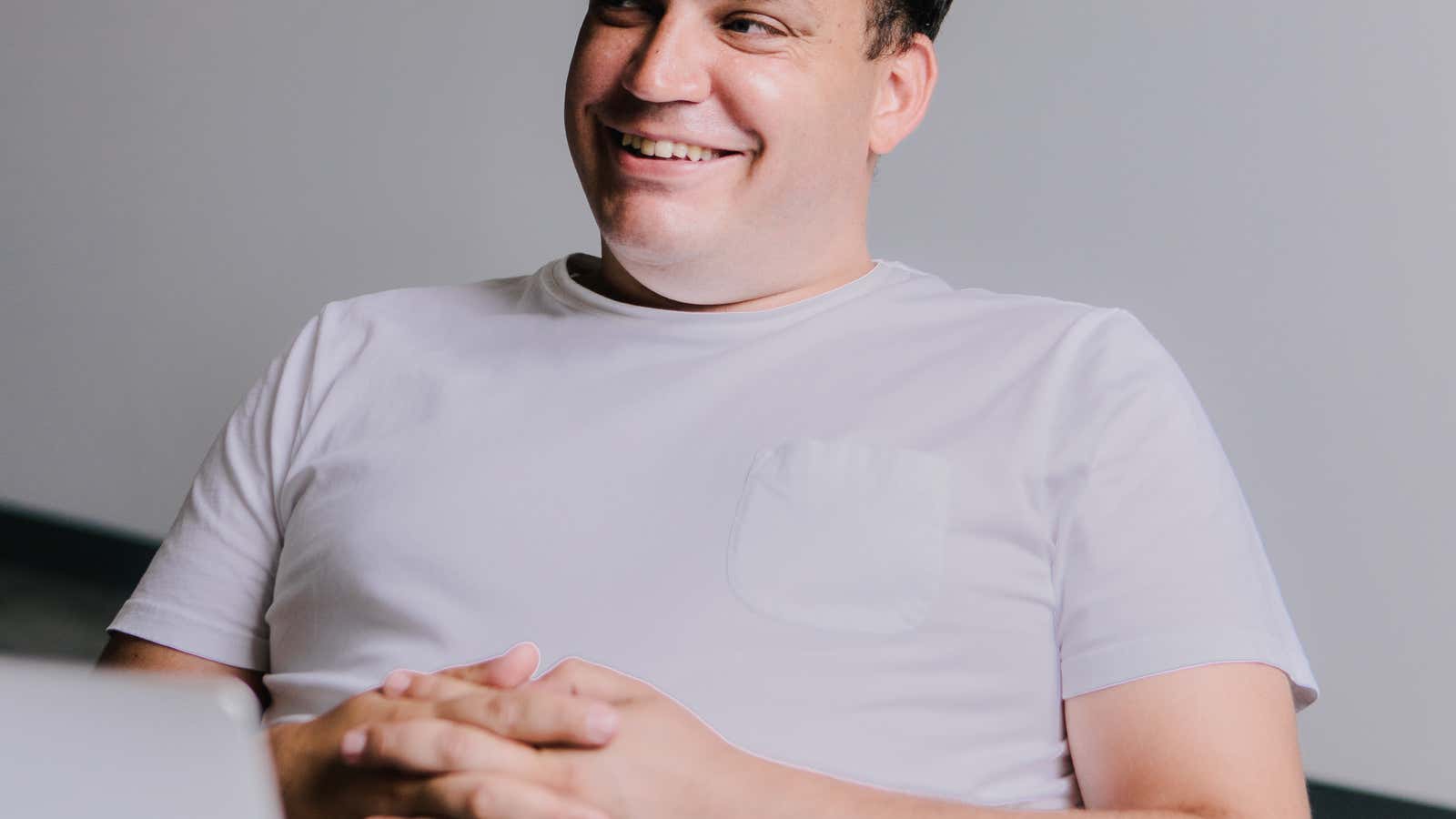Neil Waller and his cofounders started Whalar in 2016 after using social media to advertise their watch brand, Shore Projects, and struggling with the lack of infrastructure surrounding it. As the influencer advertising market has sky-rocketed since, it has become rife with fake followers, shady bots, and murky regulations. Today, Whalar is an agency and online platform that helps brands including Dior, Ralph Lauren, Topshop, Tommy Hilfiger, Nike, and Adidas navigate this $2 billion advertising market and connect with social media influencers to co-create and execute their marketing campaigns. Here’s how.
This piece, in Waller’s words as told to Jenni Avins, has been edited and condensed.
It’s a bit like Airbnb. Anyone could have gone and stayed in someone’s home, but Airbnb just put a safety net and made it possible and scalable. Brands were already working with influencers; we were just finding it difficult and hit-or-miss. By coming and being an intermediary to help serve both sides, you make it possible to be done at scale, and reliable, and you help educate both sides on what can be done.
So as an example, Dior came to us with a campaign called Love Chain. It was 200 influencers in 58 different countries. The brief was for influencers to take an existing video ad and create a local interpretation that fit with the Dior aesthetic and audience.
From a brand brief, once we’ve got all the audience data and the aesthetics of what they’re trying to do, we pull data from Instagram and Facebook and go, who matches? Who is already following this brand, or who’s talking about luxury?
A third of our company is software engineering: data scientists, image-recognition tools, and audience analysis. Our system can actually match aesthetics to try and find people that are the right vibe with each other—like a dating site.
If you’re an influencer, you have an app in a dashboard where you receive the briefs. You can review what’s been asked of you, agree to terms, submit the work through it to get approvals and signoffs, and feedback. Everything is just handled in this messaging center to make it really easy for you.
Once we have an approved list, the influencers receive a notification: There’s this campaign and you’ve been chosen by Dior. This is the request: would you like to work on it? And here’s what we think is the right financial amount. Ultimately, the influencer decides—they put in a price. They then agree, they create the work, back into the Whalar dashboard, our team sees the work, and they approve it. It goes to Dior for approvals and feedback, maybe some small changes, Dior approves it, job done.
Even though there’s data to help create the shortlist of influencers, there are still humans—both on our side and the brand side—sorting through it and deciding who’s right for a campaign. If you just rely on data, you’re totally screwed. Data doesn’t really allow for innovation, because if all you do is look at the data, you’ll all make the same decisions. It’s a collaboration between a brand and an influencer, creating together. Really, it’s a human business.
Trust is everything. That’s why people follow the influencers that have relevancy to them. So they declare it very openly: This is a page for promotion in partnership with so and so. If it’s unsuitable the audience jump on them and go, what the f— are you doing? This is awful! This isn’t why I follow you. If it’s suitable, the audience is like, great, well done, this is brilliant. And yeah, I love that product, it’s really interesting.
In many ways, the brands still have total control. They are choosing the people that get briefed and commissioned, and give feedback on the content. But these influencers come from within their audience group. They’re the tastemakers. So why wouldn’t you listen to them?

We’re working with one brand at the moment—they’re struggling with the concept that they’re going to deliver in a marketing message, so they’re looking to work with different people within an audience group to discover ideas, and use it as a think tank. The brief is very open: This is our product; this is what we try to stand for, but we’re not quite sure how to convey that. Help us come up with ideas. How would you interpret this? What would you find interesting?
That’s starting to happen more and more. How influencers interpret the brief differently will teach the brand how to talk to that distinct audience group. Brands can use that to go, “Well we might just tweak our narrative. In Malaysia, they seem to be talking about this differently than in London. Or in London, this community versus that community see it in these different ways.”
We also get briefs where a brand comes to us with a global shoot: Can you shoot this in these 10 key cities around the world, so you get that localized feeling to it? It would have been so expensive to do that before, and now it costs a fraction. When you’re going to local markets with assets that came from that local market, funny enough, it performs better.
I had an aha moment when I went to Coca-Cola’s Atlanta headquarters. On the wall there is the brief for the Coca-Cola bottle. It said to design a bottle that when smashed in little shards on the floor, you can still tell it’s a Coca-Cola bottle. And I went, that’s what we do at Whalar. The bottle is the idea, the overall marketing. With all of this you can tell it’s Sweaty Betty, it’s G-Star, or that it’s Hackett. But every individual piece is a shard speaking to a particular audience. But if each shard doesn’t belong to the big idea, if you can’t tell across all those audience groups that it belonged to something, then you’re kind of wasting your time.
